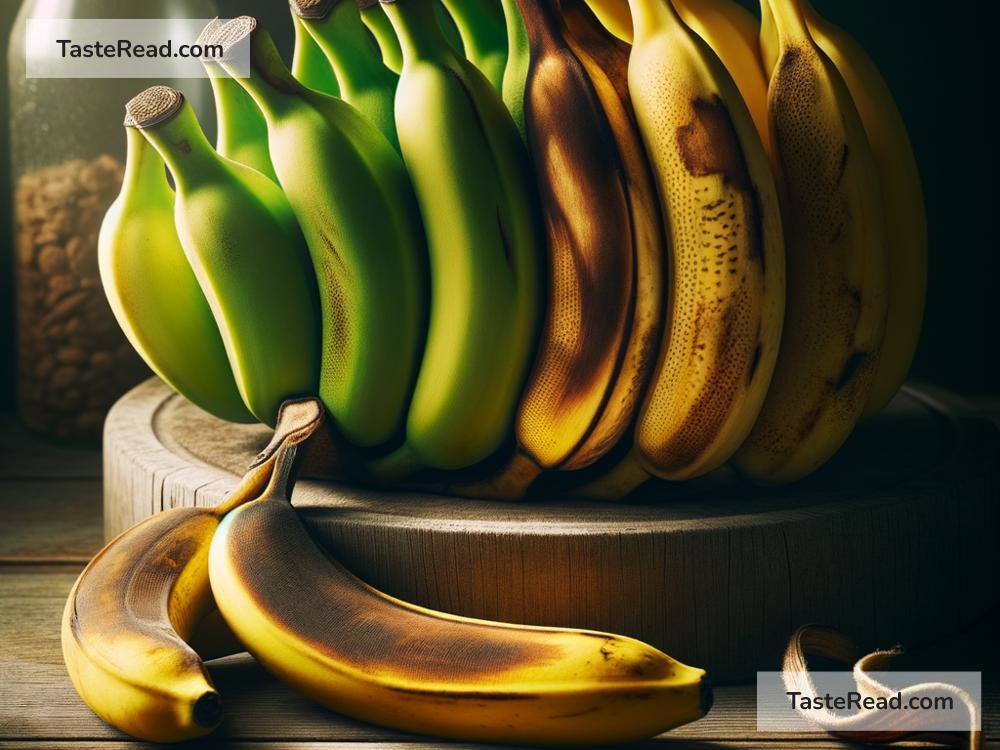Why Bananas Turn Brown as They Ripen
Bananas are one of the most popular fruits in the world. They’re sweet, easy to eat, and full of nutrients. But if you’ve ever bought a bunch of bananas, you may have noticed something interesting: they don’t stay the same forever. At first, bananas are green and firm, but as they ripen, they become yellow, soft, and sweet. Then, if you wait too long, they start turning brown and mushy. Have you ever wondered why this happens?
In this blog post, we’re going to explain why bananas turn brown as they ripen. We’ll talk about the science behind the process and why bananas change color, texture, and taste over time—all in simple English.
How Do Bananas Ripen?
Before we dive into why bananas turn brown, let’s first understand the ripening process. When bananas are picked from the tree, they are green. This green color comes from chlorophyll, the substance that helps plants absorb sunlight and create energy. At this stage, bananas are firm and their taste is starchy, not sweet.
Once bananas start to ripen, a natural gas called ethylene plays an important role. Ethylene acts like a signal, telling the banana that it’s time to soften, sweeten, and get ready to eat. This gas triggers chemical changes inside the banana. The green chlorophyll breaks down, revealing yellow pigments, making the banana change color. The starches inside the fruit also convert into sugars, which is why ripe bananas taste sweeter than green ones.
Why Do Bananas Turn Brown?
As bananas continue to ripen, they eventually start turning brown. This happens because of a combination of chemical reactions and exposure to oxygen from the air. Let’s break it down.
- Cell Damage and Browning Reactions
Bananas have cells inside their skin and flesh, just like every living thing. When the banana ripens, these cells become weaker and more fragile. As the fruit gets softer, the cells break more easily. When this happens, certain enzymes inside the banana, such as polyphenol oxidase, come into contact with oxygen from the air. This leads to a chemical reaction called oxidation.
Oxidation causes the pigments in the banana’s skin and flesh to turn brown. This is similar to what happens when you cut an apple and leave it exposed to air—it changes color because of oxidation.
-
Death of Chlorophyll
Earlier, we mentioned that green bananas contain chlorophyll. As bananas ripen, this chlorophyll breaks down and is replaced by yellow pigments. However, as the ripening process continues, these pigment molecules also start to break down. This is why ripe bananas lose their bright yellow color and turn darker over time. -
Sugars and Heat
Ripe bananas are full of sugar, and sugar can react with proteins and oxygen when exposed to heat or air. This creates more browning. If you leave bananas in a warm place, they tend to ripen and brown faster than bananas stored in cooler conditions. This is why you may notice bananas turn brown more quickly in summer or if you keep them on the kitchen counter.
Are Brown Bananas Safe to Eat?
The short answer is yes. Brown bananas are safe to eat, but they taste and look different than ripe yellow bananas. Brown bananas are often softer and mushier, and the sweetness may become more intense. If the banana is only a little brown, it’s still great to eat raw or use in recipes like smoothies and banana bread. However, if the banana is extremely brown and has grown mold or smells rotten, it’s probably no longer safe to eat.
How Can You Slow Down Browning?
If you want your bananas to stay fresh and yellow for longer, here are some tips:
-
Store Them in a Cool Place: Don’t put bananas on sunny counters or near heat. A cooler area slows down the ripening and browning process.
-
Separate Them: Bananas release ethylene, and this gas spreads to other bananas nearby, causing them to ripen faster. If you separate your bananas, they won’t ripen as quickly.
-
Wrap the Stems: You can wrap the stems of bananas with plastic wrap to limit the ethylene release. This trick keeps the bananas fresher for a longer time.
-
Refrigerate Ripe Bananas: If your bananas are already ripe but you’re not ready to eat them, put them in the fridge. The skin may turn brown, but the fruit inside will stay fresher for longer.
Final Thoughts
Bananas turning brown is a natural part of their life cycle. It’s caused by chemical reactions, enzymes, and exposure to oxygen. While brown bananas may not look as pretty as yellow ones, they’re still delicious and can be used in many recipes. The next time you see your bananas turning brown, remember it’s not a bad thing—it’s just nature doing its job.
So now you know why this amazing fruit changes over time! Whether you like them green, yellow, or brown, bananas are always a healthy and tasty choice. Enjoy!


